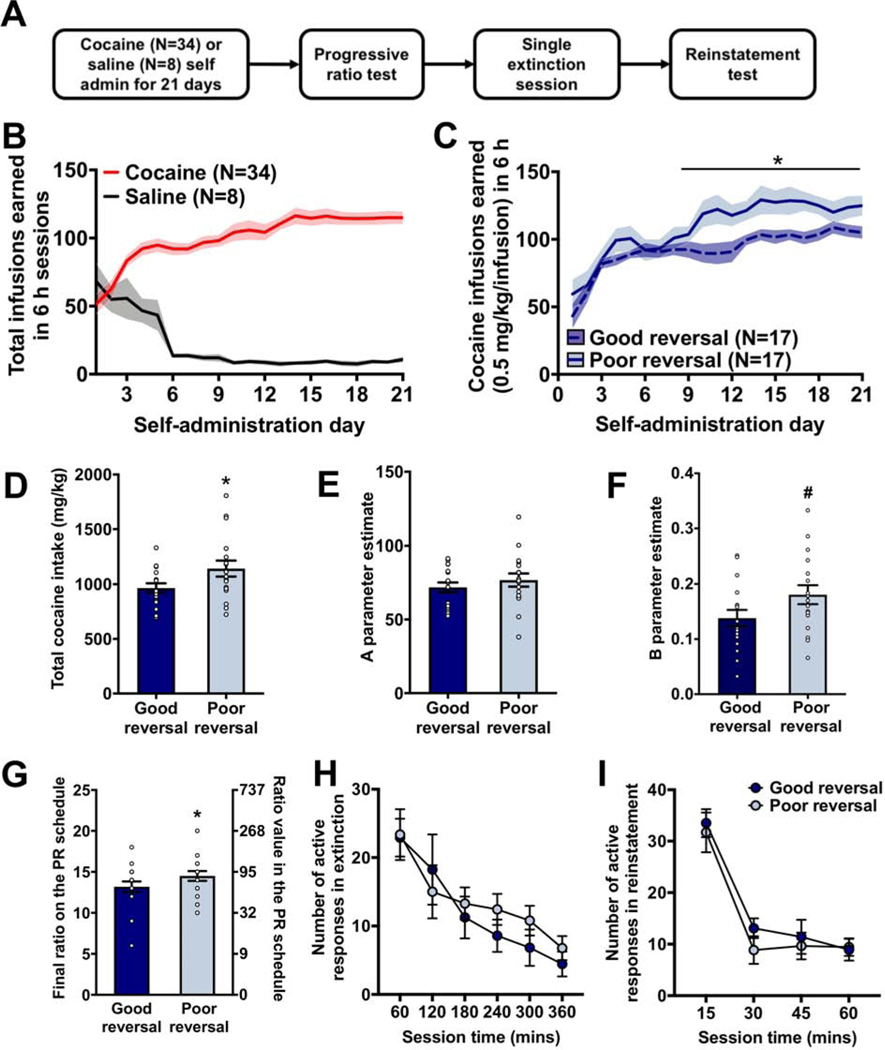Figure 4:
Poor reversal performance is associated with a greater escalation in cocaine intake. (A) The behavioral experiments used for assessing addiction-relevant behaviors. (B) The number of infusions earned increased in the cocaine self-administration group and decreased in the saline self-administration group across the 21 6 h daily sessions. (C) The rate of increase in the number of cocaine infusions earned across the 21 self-administration sessions was significantly greater in the poor reversal group compared to the good reversal group. Group differences emerged on the 9th session and persisted until the 21st session. (D) The total number of infusions earned across the 21 sessions was significantly greater in the poor reversal group compared to the good reversal group. (E-F) The power function revealed that initial cocaine reinforcement was similar between the good and poor reversal groups but that the (E) rate of escalation in cocaine self-administration was higher in the poor reversal group. (G) The final schedule achieved in the progressive ratio (PR) test was higher in the poor reversal group. No group differences were observed in the number of responses rats made in the extinction test (H) or in the cue-induced reinstatement test (I). * p<0.05.

